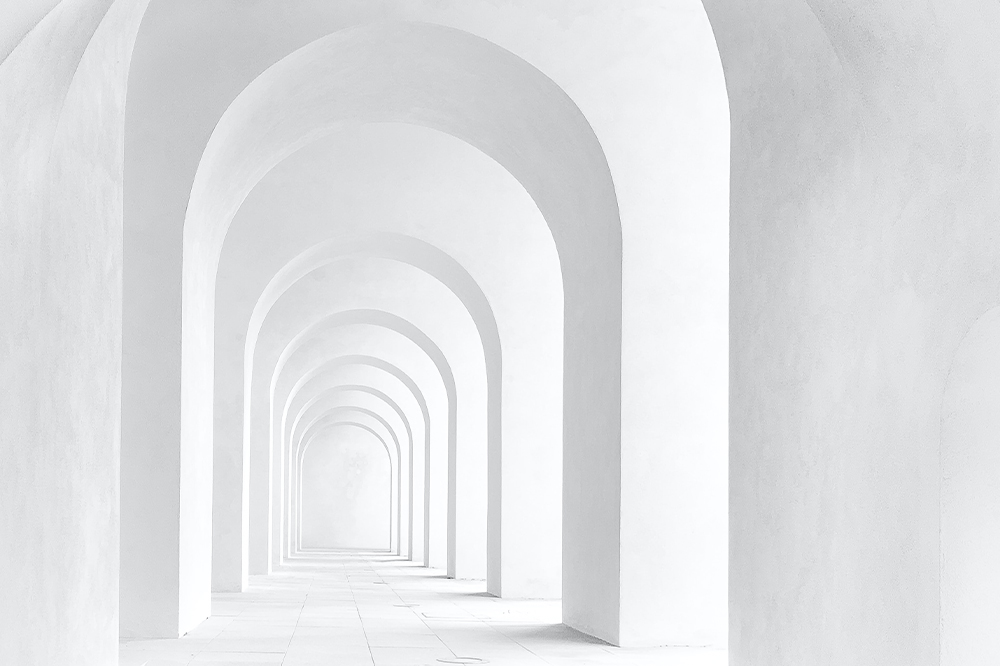To see one in all and all in one is to break through the great barrier which narrows one’s perception of reality.”
—Thich Nhat Hanh
In a news story, A man in Australia, Belgrave, found roaming in the streets in a plastic bubble and shouting I’m the man in a bubble. The man in a bubble quickly becomes a viral news article to social media delight. Different opinions ensued over the internet on how safe it is to protect from the pandemic, how hilarious it is, and some pondered about the potential risk for ongoing traffic and some palpable excitement about the novel idea to use bubbles as a protective shield from the pandemic.
Don’t we all already live a life in a metaphorical bubble? The bubble of our social networks, family, friend circles, The Ideologies, creed, and culture we grew up and the homes and communities we live in. It is tough for our self-seeking mind to realize the mind itself is a bubble. We see the world through our “self, “created bubble in delusional hues. The bubble is a physical metaphor for our Separation from the reality of Interdependence.
The fundamental teaching of Buddha is Nothing exists within itself of self-nature, and all living and nonliving exist in Interdependence. The “law of becoming” says causes and conditions of the past and present set the motion of our existence by forming the five aggregates of body, sensations, perception, volition, and consciousness. When those causes and conditions disintegrate the five aggregates, our life falls apart. In Samsara, we create an ego-driven identity that separates us from everyone, and everything else and the transient nature of all things is a passing glimpse pushed into the deep recesses of the mind. We tend to see Interdependency as a transactional activity of reciprocal giving and taking. We live our entire life through the bubble of “self” and completely miss the wondrous, interdependent reality of life.
When we observe the natural world, we see Interdependency is everywhere. Flowers attract bees and birds to spread the pollen and seeds to perpetuate their genetic continuity. Birds build their nests near the colonies of wasps: the rhinoceros and oxpecker relationship. The fallen trees give nutrient-rich food and shelter to bugs, Plants, Fungi, and animals. Modern science reveals that human beings are themselves walking and sleeping Biomes consisting of billions of microbes, and our physical and emotional wellbeing depends mostly on our microbial partners’ wellbeing. In life and death, nature thrives on symbiotic relationships and Interdependence. The interdependent view still expresses the Separation of beings and things from each other and their mutual dependency.
Mahayana Buddhist wisdom teaches a more profound interpretation of Interdependency. All living and nonliving things are not only connected through the web of Interdependence, but they live through each other, when we change or impact one thing, everything impacts, and changes. Venerable Thich Nhat Hanh called this “interbeing.” giving a poetic analogy of Interbeing as “a white cloud in the sky forms a beautiful paper in our hands.” Through a deep contemplation when we see into the paper, we could see how paper formed from the trees, forest where the trees came from, and the raindrops from the white clouds that nurtured the forest. The Form of paper only possible when white clouds exist. Alan Watts mystically explained how unity, differentiation, and mutual dependency connected a conical shape of a particular Fox face to Galaxy 81. These are not simple metaphorical attention-catching phrases or magical thinking but deep down a fundamental reality expressed as a web of interconnected nature of reality.
The Interdependent reality expressed in Zen as Ji-Ji-Muge. ( Japanese ) and Ri-Ji-muge. Ri is absolute reality, emptiness, sunyata Ji is particular, discrimination, objects, and forms. Ji-Ji muge is the Interpenetration of all things. Ri-Ji-muge is the essence of Zen meditative Practices, where Form is emptiness, and emptiness is form. Ji-Ji muge is a boundaryless circle that is everywhere in the universe with no center. Ji-Ji Muge includes flowing rivers, mist-covered mountains, deep valleys, dewdrops on flowers, Blackholes, spiraling galaxies, pine trees in the forest, barking dogs, smiling babies, and all living and the nonliving. How amazing all these myriad things come into existence of interpenetrated reality over billions of years.
Papancha -World of proliferation :
When we look around, we see a world of the unlimited proliferation of all things. Everything that is created starts with one and soon becomes two, and two becomes many. Our digital age is a deluge of images, music, books, movies, games. Billions of consumer products, clothes, accessories. Countless variety of choices to indulge and never-ending sensory stimulations. The universe also seems to be Nothing but multitudes, billions of galaxies, trillions of stars, and planetary systems. The pali word Papancha or Sanskrit word, Prapancha, express this proliferation as conceptual construction, differentiation, or spreading out. Papancha is a synonym for the world in the Early Buddhist Language of pali, representing the expansion of both the mental and phenomenal world. The fundamental source of this proliferation is self-seeking and discriminating consciousness (Vikalpa in Pali ).
In Surangama sutra Buddha in response to Monk Purnamaitrayanaputra explains the nature of the discriminating mind. “Purna, everything flows from our unitary consciousness ( Alaya Vijnana ). When perception rises to sensory response, the discriminating consciousness divides reality into self and other. This process begins with adding perception over perception leading to innumerable divisions of mental constructs. what started as unitary awareness separated into observer and the observed. Thus fundamental unitary consciousness is obscured like a bright sky covered by dark clouds “. In many early teachings, a great emphasis was given on Nishpapancha (Non-Proliferation) through Sila ( Moral conduct ) and Samadhi ( contemplation practices). Discriminating mind is the root source of Mental proliferation and corresponding physical manifestations of our phenomenal world.
Nowadays modern societies are coming to terms with this collective burden of the unhinged proliferation of everything. In urban societies, simplification, decluttering of mind, and homes becoming a new moto .” more is less becoming modern life’s anthem. The choicelessness and stuckness we experience with too many choices in this physical world is a direct reflection of our collective state of mind of papancha.
In our phenomenal world, no two things ever are the same, and there are always subtle variations and differentiation. Sage Laozi expressed this as Tao gives birth to the one, the One gives birth to two. The two give birth to three, and three give birth to many. Taoists made profound observations on the duality and multiplicity of everything in the phenomenal world. The duality and polarity of active/ passive, expansion/ contraction, dynamic movements /static stability make the whole existence, and it’s cycles of becoming. It applies to all things concerned in the phenomenal world, whether it is stock markets, cells of the body, weather patterns, fashion cycles, and societies. Nothing escapes from this discriminating consciousness (vikalpa ) that perpetuates the papancha. The antidote to papancha is waking up from slumber and breaking out from the bubble of self to realize differentiation is an illusion and a daydream. The awakened mind knows all streamlets come from the same source and return to the same source of reality.
The Wings of a butterfly :
In the deep Amazon rainforest, The wings of the beautiful Blue morphos butterfly flap very rapidly. That instance slightly changes the course of a micro weather pattern, and many months later, this small change causes a devastating typhoon in the Pacific seas. We often read and hear this fantastical imagery in explaining the Chaos Theory. The symbolic butterfly flaps represent minute conditions that could have a massive impact over time and distant space.
Newtonian Mechanistic determinism is the dominant view of the world In the Eighteenth Century. Henri Poincare is a French mathematician and last of the universalists of great scientific minds. He shared his contrarian wisdom about causes, conditions, and effects, finding the middle ground between the Eighteenth century’s world view of determinism and the role of chance. In his words, “A very Small reason which escapes our attention determines a considerably more significant impact. When We fail to see the relation, we say the effect is due to chance. Suppose we know precisely the nature of the law and situation of the universe at the first moment. We could predict the status of the universe accurately at a succeeding movement “. Edward Lorenz, metrologist and mathematician, found a real example while doing computer-based large weather pattern simulation. A very minute difference in initial weather conditions over time showed a massive swing in weather patterns of unimaginable magnitude. Eventually, this discovery popularized the notion of Butterfly wing flaps, causing a typhoon in a different place and time.
Buddha awakened to Karma’s cosmic law, and its interdependent causes, conditions, and effects (Karma Vipaka in pali ) expressed as a middle path in cause and effect dichotomy. Buddha avoided the extremes of the deterministic worldview of all causes and effects preordained as destiny or a world of everything happening randomly and by chance. In Buddhist teaching, causes and conditions are forces that drive the “wheel of becoming” where everything is interdependent, and causality is reciprocal and mutual and yet offering the freedom of choice through individuals’ awareness and will to act.
Ancient Buddhist teachings and the modern world’s Chao’s interpretations consistently see a vast interdependent world of causes; innumerable conditions create their effects of different propensity while substantially separated by space and time. In this dynamic and profoundly interconnected world, all outcomes are sensitive to the tiny and innumerable conditions. The subtlest changes over long periods could cause an event of unfathomable magnitude.
In this deeply interpenetrated world of causes and conditions, Nothing could be in its bubble, and no act is without consequence, and no effect is without a cause. The cause and effect are mutual and exponential. A wing flap that could create Strom, A spackle of pebbles that causes an avalanche, A wayward asteroid that destroyed dinosaurs while allowing small mammals to thrive. In our everyday world, we could only perceive the world in a linear and deterministic way; it is hard to see how deeply and vastly our reality is interdependent. Five hundred years after Buddha, Mahayana tradition developed an extensive array of metaphorical and symbolic representation of this interpenetrated world in sublime sutras and gatha’s ( Stories, poems ) from the direct experience of reality.
The Hall of mirrors and Indra’s jewel net :
Nagarjuna using the sword of rationality, took head-on the rationality. Using the traditional Buddhist logic of Tretlema (four-fold negation), he deftly cut through reality. He showed how emptiness, the world of forms, co-dependent origination are interchangeable, and the same ( refer Emptiness of Infinite potential post ). The true wisdom of existence is revealed in the interplay of emptiness and forms.
The legend says that Nagarjuna retrieved the hidden Mahayana sutra treasures of elevated teaching of Buddha from Naga’s realms. Avatamsaka sutra is one such treasure of unknown author, and origin emerged to become an elevated spiritual text influencing many Buddhist schools on Interdependency. In Avatamsaka sutra, the interdependent reality is expressed in a mind-bending, psychedelic language of limitless dimensions, realms, and reality as a cosmic dance. Avatamsaka Sutra, interpreted through the Buddhist Huayen masters of ancient China, conveyed the Interpenetration of reality as whole existence permeates each of its parts. Each part is a representation of the whole existence. The best comparable way to describe this reality in modern scientific language is Fractals and holograms. The fractal geometric shapes can be separated into parts, each of which is a reduced-scale version of the whole. Hence each is a replica of whole and whole is a manifestation of each at scale. Another example is holographic, where every part of it possesses information possessed by the entirety this whole is in every part.
Huayen Master Fazang ( 643-712 ) elucidated the Interpenetration of reality in his famous treatise of Golden Lion and created a hall of mirror illusion to give visual and experiential metaphors to novice monks. By placing four mirrors around the Buddha statue and one above and one below and lit a lamp to illuminate the Buddha, each of Budhha images reflected in each other mirrors, thus creating infinite images of Buddha in those mirrors. Huyen’s master described this inter-reflecting reality as Shih-Shih wu-ai, each part revealing in other, each reflecting in others and all-pervading. In the earliest Buddhist sutras, the Interpenetration explained through Indra’s diamond net ( Indra Jala ) or Brahma’s net ( Brahma Jala ).
Indra’s net is a web of limitless interconnected nodes of diamonds. The nodes represent an infinite number of worlds, realms, and beings connected as Indra’s diamond net. Each node is touched simultaneously and instantaneously by all other nodes. A change in one node simultaneously and instantaneously reflects in all other nodes; thus, every node consists of an infinite number of nodes. Huyan masters describe this Interconnected, inner reflective, and all-pervading net of reality as Interpenetration.
Sudana’s Journey of Realization :
The story of sudana is somewhat similar to Buddha’s. Sudhana Kumara ( literal translation is the son of good wealth ) is from a well to do merchant banker family in southern India from the town of Dhanyakara. In his quest for realization, he would like to leave home and become a monk; He comes across Bodhisattva Manjusri. He was advised by Bodhisattva Manjusri to visit and speak with other realized beings as spiritual friends ( Kalyana Mitra in Sanskrit ) to seek their guidance. Throughout the story of this spiritual journey, Sudana visits 53 accomplished spiritual adepts and seeks their advice. These 53 realized ones come from different walks of life, priests, princes, Monks, seafarers, courtesans, fishers, Devas, and Bodhisattvas. Each of them shares with sudana their own experience of spiritual quest and their understanding of reality.
Sudana’s story is from GandaVyuha sutra as part of the larger body of Avatamsaka ( Flower Garland ) sutra or Kegon Kyo. Avatamsaka is one of the most exalted sutras in the Huayan school and later introduced into Zen practice. Avatamsaka is also highly esteemed sutra in other Buddhist schools of Tendai, Shingon, Judo-sha, Jodo-shin-shu, and Nichirin. One cultural view is that the underpinning of Japanese and Korean art forms are developed based on Kegon-Jishu ( View of Kegon). Sudana’s pilgrimage illustrated in the ancient art of China, Japan, Korea, and Java, the second gallery of Borobudur ( about 50 miles from Yogyakarta city in Indonesia ), depicts his journey in great detail on 128 panels. The great Shingon / Vajrayana master Kukai ( Kobo Daishi) used the kegon sutra’s sublime interpretation of cosmic reality for the architectural Mandala design of Mt.Koya monastery in Japan. The magnificent Borobudur temple architecture itself also draws its Mandala architectural inspiration from Gandavyuha’s layered and innumerable realms interpretation of reality.
Gandavyuha’s format is spiritual fiction with visionary imagery and breathtaking language that tries to encapsulate reality. The meaning of Gandavyuha is Ganda is Supreme; Vyuha is a strategy or Array. The supreme strategy is an odd name for a spiritual sutra, and true to its name, sutra implies spiritual quest, and narrative progression happens in concentric circles. Huayan masters of the 7th century China and Korea took the task of GandaVyuha’s exegesis in a sublime language to form one of the most elevated schools of Buddhist teachings.
Sudana starts his journey from his hometown of Dhanyakara, and the journey happens over the decades and vast geographical area. Initially, he meets with realized beings of lesser perfection and is guided by them to meet perfected spiritual masters in progression. In each progress, the language of awakening and the nature of reality changes to a deeper and more vivid visual imaginary. At the center of this concentric narrative, the circle presided by the cosmic field of Vairocana Buddha. In the final chapters, he meets Bodhistava’s Maitreya, Manjusree Samanthabuddha. Guided by them, he directly experiences the cosmic Buddha Vairocana field of reality described in mind-bending language that touches the limits of our imagination.
Gandavyuha describes the cosmic Buddha-mind ( Vairocana ) as a fundamental body/field with infinite emanations of realms, beings, and eons from each pore of the body. These Beings, realms, and eons are as many dust particles present in each dust particle. Time of past, present, future, and all fields of space collapse into the infinity of eternal moment; everything in this boundless spacetime is transparent and luminous and reflects every other object of the limitless cosmic field. This inter-reflecting (Pratibhas skt )and the interpenetrated ( Prativedha skt )and all-pervasive (Spharana skt ) is the fundamental reality of Dharmadhatu ( Dhatu in Sanskrit is a fundamental element ). Dharmadhatu is immeasurable, infinite, boundless, unlimited, Pure, indestructible, all-pervasive reality, Yet this reality is an illusion and empty. This emptiness doesn’t have any mark /seal of its own; it is through the forms the emptiness revealed. All branches of manifestation of forms return to the same underlying root of the single cosmic reality of emptiness (Vairocana).
In the final chapters, Sudana comes to the gates of The future Buddha Maitreya’s towering palace ( Kutagara ) of MahaVyuha ( Great Array ) in the country of Samudrakatiha. Sudana enquires about the conduct of Bodhisattva. Maitreya invites him into the wonderful palace, snaps his fingers, and opens the gates of the towering palace. Instantaneously, Sudhana enters a world of unequaled splendor of towering palaces. The interior of each towering palace is the width of over a hundred thousand Yojana ( one Yojana is Eight miles ) as vast as the realm of space. Inside each tower contains hundreds and thousands of towers spread in all directions, and each tower embracing other towers ad infinitum. Each tower is distinct while simultaneously reflecting every other tower and all of its objects, after witnessing this vision, sudana is filled with immeasurable bliss and bows down in all directions. At that instance, Sudana perceives himself simultaneously in every tower of countless towers watching the Maitreya conducting teachings in countless realms simultaneously in the presence of Bodhisattva’s, Buddha’s of all kalpas (One Kalpa period is 4.3 billion years ). Where all past kalpas penetrated the future and the present and the present and future Kalpa’s turn back and penetrated Immeasurable past kalpas, precisely at that moment, thus that moment is precisely impregnated with immeasurable kalpas of past, present, and future. Sudhana is deeply immersed in what he is experiencing until Maitreya enters the palace and again snaps the finger and breaks the spell. Maitreya says, “Awake Sudana this is the nature of all conditioned things, and they have no self-nature and manifest through the perfected wisdom of Bodhisattva. All conditioned are illusions, dreams, reflections, and essentially empty. ”
This visionary experience somewhat equates to the modern scientific depiction of the holographic universe of all spacetime coexisting simultaneously in every point within spacetime.
Way of Interdependence for our everyday life :
We explored the world of proliferation (Papancha), the modern scientific view of chaos theory of how micro causes and conditions manifest as gigantic effects dispersed over time and space. We looked at ancient metaphors of Interpenetration and limitless realms of Indra’s net and finally Sudana’s experience in a Towering palace of Maitreya. These metaphors are similar to a blind man trying to describe the elephant by touching many parts.
What does it mean in our everyday life? My seven-year-old son always ends our movie watching or story reading with a question, is it real daddy? Most of the time, My answer is “not sure but very much possible,” and “you need to find it yourself.” I genuinely believe the key to the mystery of reality is nowhere hidden, but within ourselves, no one could open that secret passage except each of us.
Indeed, Our life is not in a bubble, and we are not separate from each other. When we break the bubble of self-created by our mind, we will find boundless compassion, and our heart grows to fill the expansive interconnectedness of everything. The deep understanding of Interpenetration profoundly changes how we conduct ourselves in our modern world. How we live every moment of our life, How we consume, how we treat fellow humans How we see all other living beings, inanimate objects.
- Knowing one thing is knowing everything: Hyun masters articulation comes from their profound understanding of the Interpenetration of all things, and this is so relevant for our modern life of lack of contentment, perpetual chasing of everything, and the constant fear of missing out. Pick your one thing in life and stay with it that leads to the wisdom of all things ( sarvaJana .skt)
- Conscious consumption: In everything we consume, whether it is foods we indulge, the clothes we wear, the places we live, bring innate awareness of the Interdependency of everything. The purpose of mindful living in Interdependency is similar to carbon neutrality, living life in Karmic propensity of lowest suffering in everything we connect and consume.
- Otherness is an illusion: How we conduct ourselves with others, the otherness of race, caste, creed, sexuality, culture, and all other myriad differences. The otherness is a myth and illusion created by our minds. The mind that understands Interpenetration sees no boundaries between one and another.
- Every object is sacred, and every act is mindful: In an interdependent world, everything is mundane and sacred simultaneously. Every action could be done with a wondrous mind. The spiritual practice doesn’t start or stop by sitting meditation. We can find mindful awareness in every act of sitting, walking, and doing every mundane thing.
- The environment we live in: Mind that rests in the Interpenetration of reality sees how precious and vulnerable our ecosystem of living and nonliving. How deeply we all connected and impacted each other in unimaginable ways. Clearing a rain forest in the Amazon basin or floating plastic debris in the Pacific sea seems distant, but deep down, the effects are already in our alley.
The three postings of Karma ( Karma consequence ), Sunyata ( Emptiness of infinite possibilities ), and Interdependence ( Interdependent reality ) point to a single truth. No amount of knowledge could ever lead to the wisdom of reality, except one’s direct experience of it through the contemplative practice. I always imagine old Zen masters turning up from their samadhi and hitting with Shippei and saying “, you blabber mouthed moron stop perpetuating the papancha. ” Like all conditioned things, even Buddha’s teachings are no exception to the proliferation of many hundreds of schools, treatises, and practices; I hope these three articles help you in your spiritual journey and contemplative practices.




